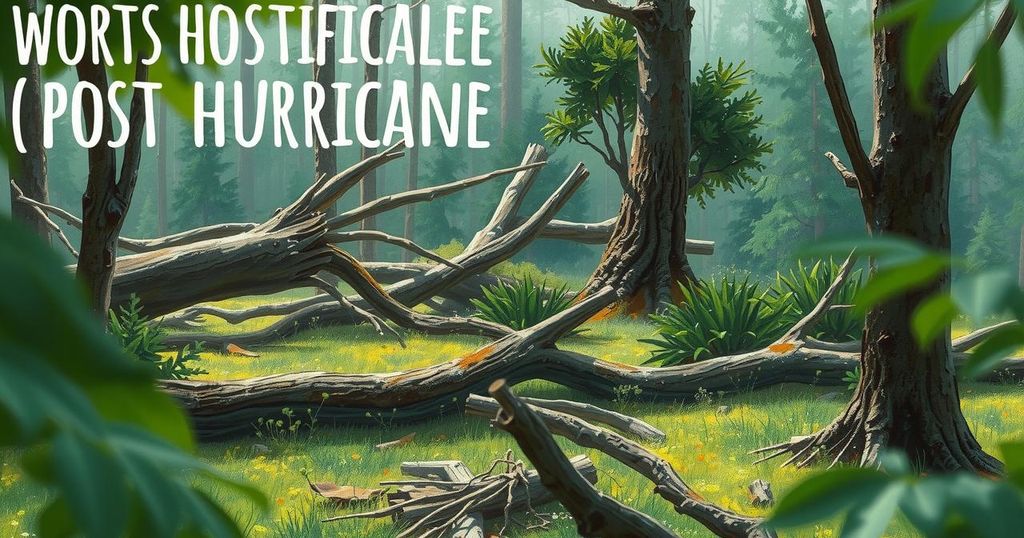Aftermath of Hurricane Helene: Rising Wildfire Risks and Hurricane Projections

Hurricane Helene caused extensive damage, leaving communities with debris that increases wildfire risks. The National Fire Protection Association highlights the role of fire in ecosystems and warns that downed materials can escalate wildfire intensity. Residents are encouraged to clear debris and understand fire danger conditions. A future outlook for the 2025 hurricane season predicts above-average storm activity.
Hurricane Helene caused significant damage in Southwest Virginia, Northeast Tennessee, and Western North Carolina, leaving communities struggling to recover. Months post-storm, lingering debris could heighten wildfire risks in the region. Michele Steinberg, the Wildfire Division Director at the National Fire Protection Association, warns that the remnants of Helene are changing fire risk patterns due to increased fuel sources created by downed materials.
In ecosystems, fire plays a crucial role by recycling nutrients and promoting healthy vegetation growth. Steinberg explains that seasonal wildfires in the Northeast, Mid-Atlantic, and Southern states generally occur in spring and fall, when conditions such as dry weather and dead materials are ripe for igniting fires. The fundamental elements of fire occurrences consist of fuel, heat, and oxygen, forming the fire triangle.
Notably, when wildfires threaten communities, residential areas become the fuel, complicating the management of fires. After events like Hurricane Helene, fallen trees and vegetation contribute to an increased wildfire fuel load, which can lead to more intense fires. Steinberg cites a distinct hazard with the accumulation of dried vegetation post-hurricane, which can escalate blaze magnitudes and propagation.
Post-hurricane recovery focuses heavily on restoring infrastructure, prioritizing roads and built environments over forest access for firefighting. Communities impacted by Helene raised concerns about elevated wildfire risks shortly after the storm, with Western North Carolina already experiencing notable wildfires this spring. This pattern aligns with historical precedents seen in previous hurricane aftermaths.
To mitigate wildfire risks, residents should educate themselves on fire-related conditions, such as understanding “Red Flag Warnings” from National Weather Service. These warnings indicate dangerous fire conditions including dry, hot, and windy weather. Homeowners are advised to clear debris around their properties to prevent embers from igniting fires.
Resources from the National Fire Protection Association, including participation in the Firewise USA program, assist communities in reducing wildfire risk through collaborative efforts. Virginia’s spring wildfire season persists until the end of April.
Looking ahead, Colorado State University’s seasonal projection forecasts 17 named storms in the 2025 Atlantic hurricane season, with nine expected to become hurricanes and four major hurricanes of Category 3 or above. These numbers surge above the 30-year average, attributed to higher sea-surface temperatures and the current weak La Niña event, which may lead to a neutral El Niño or persist as weak La Niña.
Hurricane Helene’s impact lingers in the form of increased wildfire risks due to extensive debris and vegetation left in its wake. The National Fire Protection Association emphasizes the importance of understanding wildfire conditions and maintaining properties to prevent damage. With predictions of heightened hurricane activity in the upcoming seasons, proactive community engagement and preparedness are essential for mitigating future risks.
Original Source: www.wvtf.org







